The Deep Blue D: Is Kentucky's defense the best of the modern era?

This story appears in the Feb. 9, 2015, issue of Sports Illustrated. Subscribe to the magazine here.
Cal’s getting greedy on us now. It’s a Thursday night in Lexington, in a good winter to be the coach of Kentucky. John Calipari has an undefeated, No. 1-ranked team, and as he told his Wildcats earlier today, “People” -- as in, those who forecasted various degrees of ego-driven implosion -- “are going crazy” that their platoon experiment, with swapping, five-man units and nine NBA prospects playing no more than 25 minutes per game, is working. He went from practice, to Mass, to dinner, where he’s now sitting in the same side of a booth, in the back of a dimly lit bistro, with his wife of 28 years, Ellen. He is in a buoyant mood, so enamored with an Italian-sausage appetizer that he has called it “ridiculous” three times, and he has just received word, via a text from a friend, that two of his former All-Americas, John Wall and Anthony Davis, will be starters in the NBA All‑Star Game. Calipari is pleased enough with his reply that he reads it aloud to the table: That’s all?
He does, after all, have 18 former college players in the NBA: Wall, who lifted Kentucky to a No. 1 ranking in 2009-10, Calipari’s first season in Lexington, just happens to be the best of his guard products at the moment; and Davis, who led the Wildcats to Calipari’s first national title in ’11-12, is leading the NBA in efficiency. Davis remains the highest-impact defender Calipari has ever coached. “There’s only one Anthony Davis,” Calipari says, “and everyone ...” Here, he halts for two beats, overtaken by a different thought.
“Should Anthony still be playing for me?”
In a bygone world, before the one-and-done era in which Calipari has built his empire, Davis would be a 21-year-old senior, closing in on his fourth Wooden Award. “Could you imagine?” Calipari says, reading off a hypothetical lineup: Davis as a 6-foot-10 small forward alongside 7-foot junior Willie Cauley-Stein and 6-11 freshman Karl-Anthony Towns -- both likely lottery picks -- with 7-foot sophomore Dakari Johnson backing them up.
“Oh, my gosh. You may not score,” Calipari says. “Seven” -- the soul-crushing point total UCLA had in the first half of an 83-44 loss to the Wildcats on Dec. 20 -- “would be like an average number."
It is a cruel fantasy, if the self-esteem of the roughly 4,500 non-Kentucky Division I players is taken into consideration. The current Wildcats are in no need of help. They’ve been so stifling through their first 20 games -- allowing just 0.801 points per possession and a field goal percentage of 32.1, both the lowest figures in the nation -- that it is now customary for losing coaches to say something retweetably superlative about how they guard. From Louisville’s Rick Pitino: “The best defensive team I’ve seen in the last 20 years, in terms of the way they get over screens, and the physicality of the way they play, the way they block shots.” Vanderbilt’s Kevin Stallings, historically no fan of Big Blue Nation: “Their defense is truly amazing.” Eastern Kentucky’s Jeff Neubauer: “I told [my team] they were just guarded by the best defensive team in the modern era of college basketball, and I’m not exaggerating a little bit when I say that.” And so on. With college basketball’s tempo lagging so far behind the NBA’s as to raise rightful concerns about the State of the Game, there is at least one historic quest in progress. Since the NCAA fully adopted the three-point line in 1986-87, there has never been a defense as difficult to score on as Kentucky’s.
*****
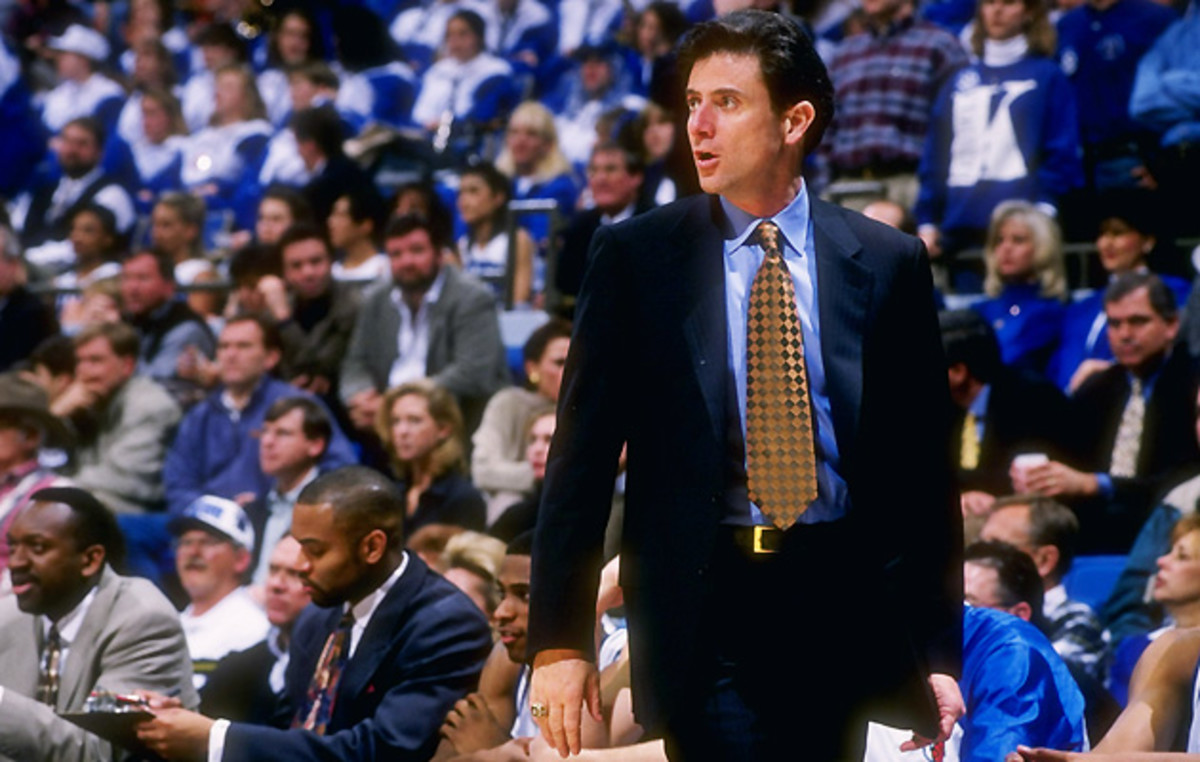
The best metric for evaluating defense is points allowed per possession (aka efficiency), adjusted for schedule strength -- but this statistic has only been tracked on the sport’s analytics authority, kenpom.com, since 2001-02. To put Kentucky in context with the rest of the modern era, SI calculated the efficiency of elite defensive teams from 1986-87 through ’00-01 using data from their box scores, then applied strength-of-schedule adjustments based on Basketball-Reference.com’s yearly SOS ratings. The final step was to compare teams’ adjusted defensive efficiencies with the national averages from their respective seasons; for example, a team from ’96-97 (when the average offense scored 0.979 points per possession) would need to be stingier than a team from ’13-14 (average offense: 1.043 PPP) in order to stand out. Once all the teams were on the same statistical plane it became evident that Kentucky is doing battle with some of its own ghosts.
Through last Friday the Wildcats had an adjusted defensive efficiency of 0.801 PPP, which is 0.212 PPP below this season’s national average. But they still have as many as 20 games left -- enough time to slip behind the five teams that had the best major-conference defensive seasons in the three-point era.
1. Kentucky 1996-97
SOS-Adjusted Defensive Efficiency: 0.814 PPP
PPP under national offensive average: 0.166
The widely held belief -- even by Pitino, who was the Wildcats’ coach that season -- is that his ’95-96, national-title-winning Untouchables had the scarier defense. They alternated between two suffocating presses, a 1‑2‑1‑1 and a “black” (or man-to-man), and Pitino says the idea was, “You’re not getting the ball inbounds, but if you do, you’re not getting it over half-court.” But the ’96–97 team, which lost in the NCAA final to Arizona, ran the same stuff with less famous personnel (guards Wayne Turner and Anthony Epps) and better statistics, forcing turnovers on 29.8 percent of their opponents’ possessions, a higher rate than any team in kenpom.com’s database, which only goes back to 2002.
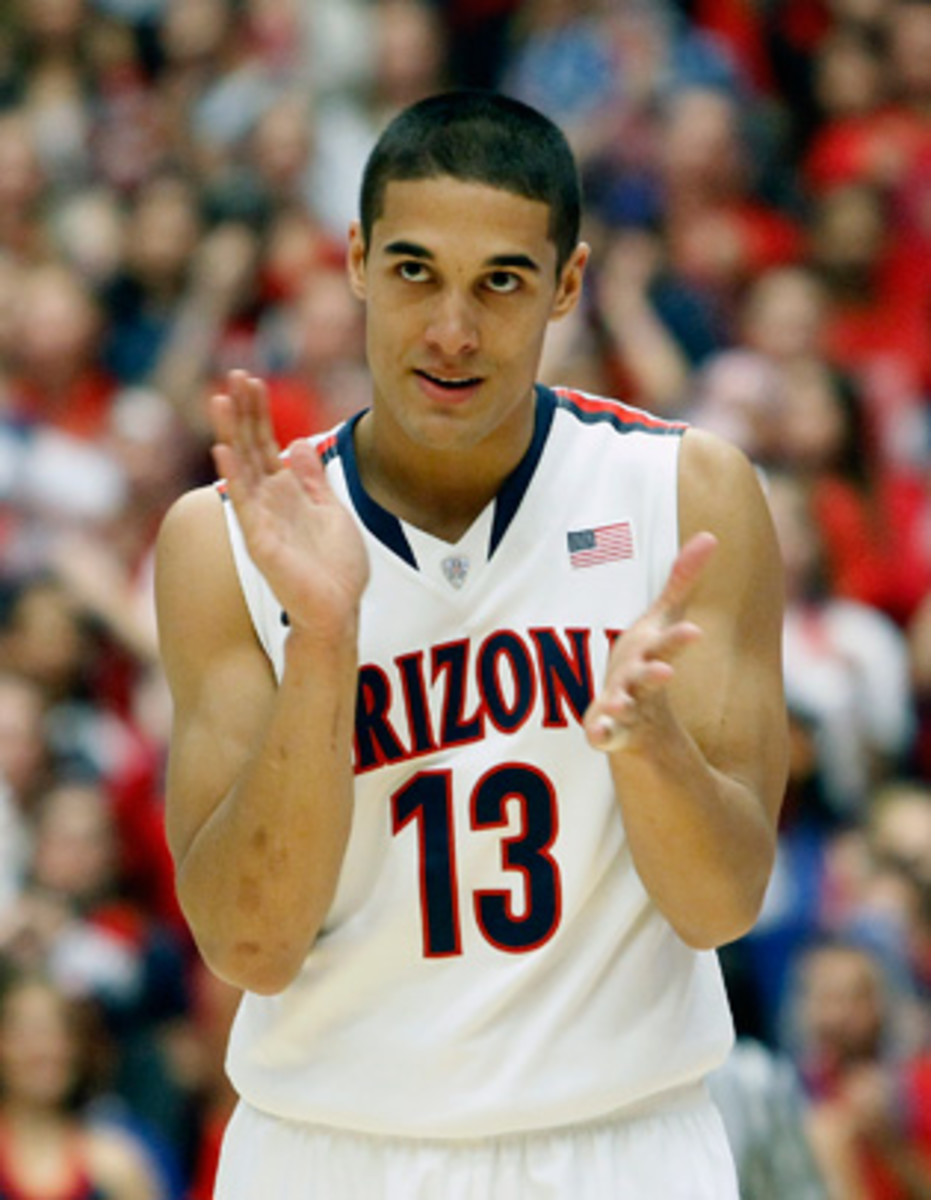
2. Arizona 2013-14
SOS-Adjusted Defensive Efficiency: 0.885 PPP
PPP under national offensive average: 0.158
Wildcats coach Sean Miller took the Pack‑Line defense from his father, John, a high school coach in Western Pennsylvania, who took it from Dick Bennett, who had devised it at Wisconsin-Green Bay in the early ’90s as a way for lesser athletes to neutralize penetrating, high-octane- offenses. The principles: Sprint back to stop transition, pack everyone but the on-ball defender inside the three-point line, position off-ball defenders to clog driving lanes, force one contested jumper, then grab the rebound. Miller used that formula with elite athletes -- led by 6-9 freshman forward Aaron Gordon and 6-3 ball-hawking guard Nick Johnson -- and forged the best Pack-Line team of all time.
3. Stanford 1999-2000
SOS-Adjusted Defensive Efficiency: 0.826 PPP
PPP under national offensive average: 0.153
The Stanford Trees -- a redwood-like front line of future NBA players Jason Collins (7-feet); his twin, Jarron (6-11); Mark Madsen (6-9); and Curtis Borchardt (7-feet) -- were what coach Mike Montgomery called a “huge luxury.” They allowed him to run a single-coverage, man-to-man scheme (the key instruction: “You’re going to guard bigs by yourself; we aren’t helping down with guards”) in which perimeter defenders stayed glued to would‑be shooters. The Cardinal’s opponents took just 29.1 percent of their field goal attempts from beyond the arc that season and made just 29.8 percent of them. By minimizing the three-pointer, then dominating the defensive glass, Stanford went 27-4 and won the Pac-10 title.
T-4. Louisville 2011-12
SOS-Adjusted Defensive Efficiency: 0.856 PPP
PPP under national offensive average: 0.152
A more balanced Pitino team won the national title the following season, but this one grinded its way to a surprise Big East tournament title, then reached the Final Four as a No. 4 seed almost entirely on the strength of its defense. The Cardinals alternated between a matchup, 2-3 zone and man-to-man, baffling offenses by morphing from one scheme to another in the middle of a possession. “We had such an intelligent team, with Kyle Kurik, Gorgui Dieng, Peyton Siva,” Pitino says. “They were a great scouting and preparation team; they knew how to stop all your options and where your weaknesses [were].”
T-4. Kentucky 1995-96
SOS-Adjusted Defensive Efficiency: 0.838 PPP
PPP under national offensive average: 0.152
The numbers don’t do justice to this Antoine Walker and Tony Delk-led team’s greatness: Their average victory margin in regular-season SEC games was so massive (24.2 points) that they sometimes stepped off the gas in the second half. When Pitino called the 2014-15 Wildcats the best defense in 20 years, he clarifies that he meant half-court defense, thanks largely to their shot-blocking big men. “I don’t think [the current] Kentucky team could beat the ’96 team, though,” he says. “It would be a heck of a game, but we had a lot of great, experienced players, and the full-court pressure -- it was enormous. I’m not sure if they could deal with that heat.”
The ’96 Untouchables won it all despite facing questions, at the outset of the season, about whether their talent surplus would hinder team chemistry. Pitino played 10 guys, eight of whom would go on to the NBA, and the Wildcats’ depth eventually was viewed as an advantage. “When we sub,” Epps said back then, “we don’t lose anything.” Where have we heard something like that lately?
*****
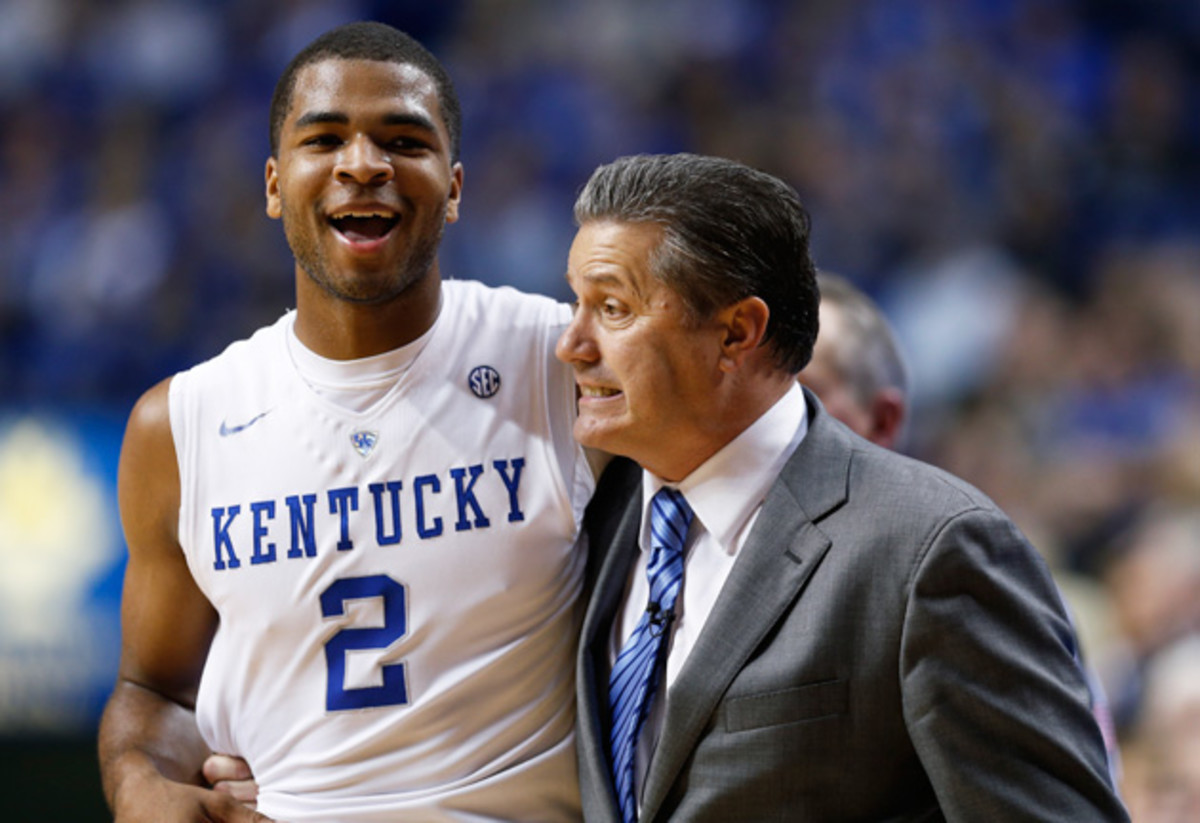
In October, shortly after the conclusion of Kentucky’s two-day scouting combine -- a concoction of the Calipari marketing machine that not only lured representatives from all 30 NBA teams to UK’s practice facility but also induced ESPNU to air what amounted to a live recruiting infomercial -- Mavericks assistant general manager Keith Grant spoke to the Wildcats and told them, “You guys could be the best defensive college team ever if you choose to be.”
Until then Calipari had not seen his team in that light. Despite making a surprise run to the national-title game last April with five freshman starters, the Wildcats finished the 2013-14 season ranked 41st in defensive efficiency. But he figured the new platoon system, devised initially as a way to keep a surplus of future pros happy, could be leveraged into a defensive advantage. They also had the athleticism and length to be great, and in Cauley-Stein, who passed on the NBA draft after suffering a severe left-ankle- injury during the Sweet 16, they had a 7‑foot equivalent of a Leatherman: He could defend all five positions, anywhere on the court. Soon after, Calipari began challenging Kentucky to be “world class” -- to eliminate nearly all unforced errors, to relish tough practices and games, and to aim to “thrash” opponents rather than settle for mere victories.
Calipari was also compelled to make strategic adjustments. His earlier Kentucky teams, as well as those at Memphis and UMass, were more Pack-Line-esque; he claims to have pioneered that scheme. (“We were the original Pack-Line at UMass,” he says. “That’s one of the few times I didn’t come up with a name for something” -- Ellen laughs at this and interjects with a knowing “Yeah.”) When he asked himself this season, How are teams going to try to beat us? he figured it wouldn’t be in the post; it would be by shooting from deep, or trying to get transition buckets before the defense could get set.
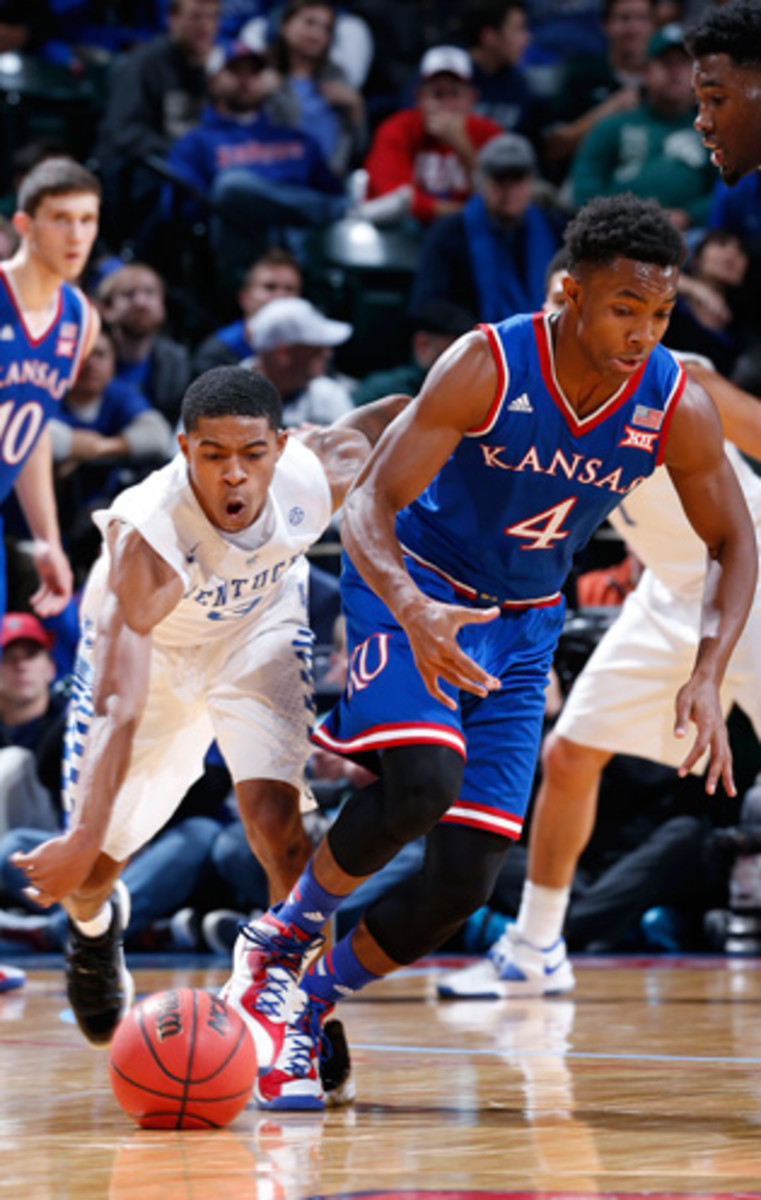
He created a corresponding list of “sins” that the Wildcats could not commit, chief among them allowing an open three or getting beat down the floor on a fast break. He has them running would-be shooters off the arc and toward an interior defense that, through the team’s first 20 games, led the country in two-point field goal percentage allowed, at 34.5 percent, and percentage of shots blocked, at 20.9. Kentucky’s perimeter players -- not just guards Tyler Ulis, Devin Booker and twins Aaron and Andrew Harrison, but also Cauley-Stein -- have the green light to press outward and gamble for steals. The Wildcats ranked 13th in turnover percentage (24.0).
These Wildcats are picking up full-court more than any other Calipari team, with the aim of slowing down inbounds passes after made shots and wearing down the legs of less-deep opponents. They’re also switching on an inordinate level of handoffs and pick-and-rolls, confident that their oversized guards can check opposing big men, and also that Cauley-Stein, and to a lesser degree Towns and 6-10 freshman forward Trey Lyles, can stop guards from penetrating. In Synergy Sports Technology’s logging of per-possession- defense versus pick-and-rolls (including passes), Kentucky ranks first nationally by a wide margin.
Their stinginess on ball-screen coverages cannot be attributed to film study. One secret about (possibly) the greatest defensive team of college basketball’s modern era: “The only film we watch,” says Cauley-Stein, “is 10 clips during the pregame meal. It’s all about effort and energy. It’s about you versus him, like, I’m not going to let him make his name off me.” Kentucky’s coaches scout opponents, and typically put players through three walk-throughs of opponents’ sets, but Calipari believes that players are better off perfecting defensive concepts -- and worrying about their own rep -- than studying tape they won’t digest.
*****
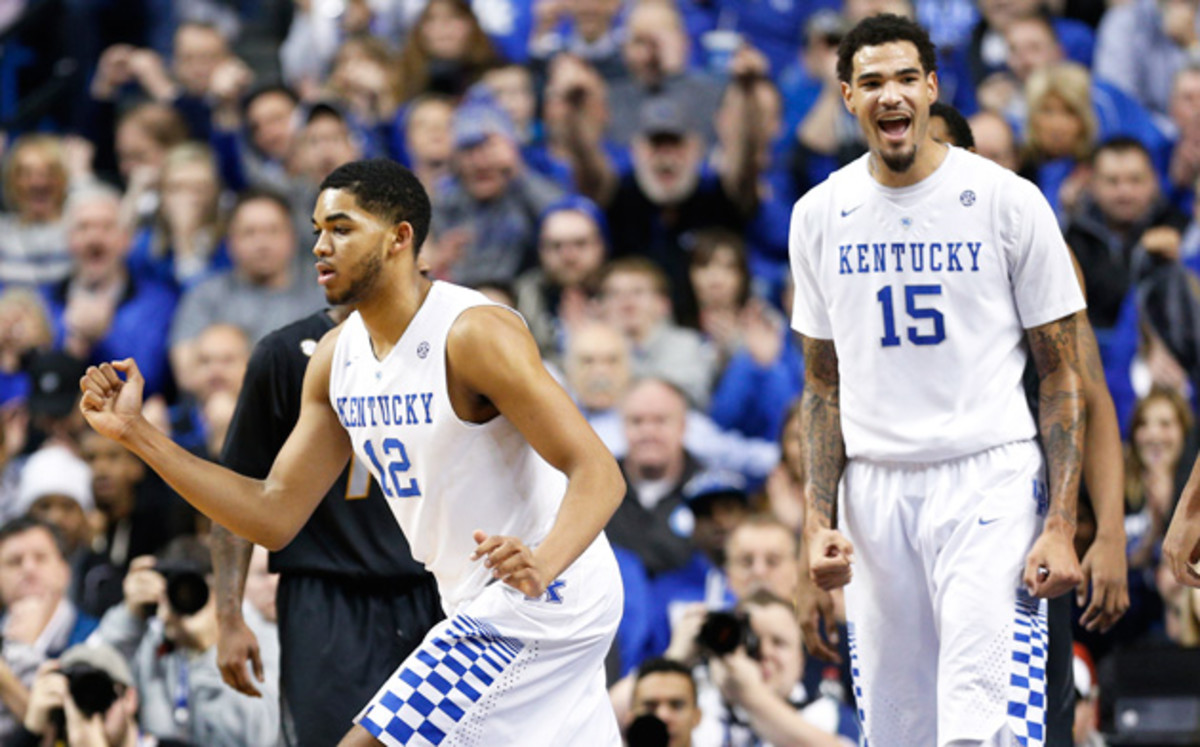
On the right side of Cauley-Stein’s neck, a problem-free philosophy -- HAKUNA MATATA -- is tattooed in thin script. The art studio major from Olathe, Kans., is the Wildcat who seems least burdened by Big Blue Nation hysteria, or even societal norms. During last year’s Final Four he appeared on the bench with a teal-blue-and-floral long-sleeved dress shirt under his jersey, and the first photo of him that surfaced post–ankle surgery, last April, showed him gleefully hunched over the handlebars of a Pride scooter, the uncool, -basket-equipped transportation mode of choice for America’s octo- and nonagenarians. Being guarded by Cauley-Stein this season, though, is no Hakuna Matata experience. It is problem abundant. Kentucky’s players may not watch much tape, but SI undertook the project of charting all 815 minutes and 1,299 possessions from their first 20 games using the Defensive Scoresheet method from statistician Dean Oliver’s 2003 book, Basketball on Paper -- which assigns credit or blame (either full or fractional) for forced misses, points yielded, turnovers created, fouls and rebounds -- in order to create individual defensive ratings. Cauley-Stein emerged from this process with his reputation more than intact.
A player’s DRating is the answer to, “How many points would Kentucky allow with this player on the floor for 100 possessions?” It should be considered in the context of the Wildcats’ baseline DRating of 74.0; players with DRatings multiple points below the team’s are its biggest assets. The charts also reveal the percentage of possessions a player “ends,” either positively or negatively (DPoss%), field goal percentage on shots defended (OppFG%), ratio of free throw attempts generated per field goal attempt defended (OppFTA/FGA), defensive rebounds per 40 minutes (DRebs/40), percentage of possessions on which turnovers are created (FTO%), and for the big men, a rim-protection stat that tracks field goal percentage when they’re within five feet of the basket and the shooter is five or fewer feet away (RimProtect%).
What did we learn? In the backcourt the arrival of freshmen Ulis (an on-ball pest) and Booker (who takes few risks but makes few mistakes) has elevated the overall defense and put pressure on the sophomore Harrison twins to keep up. They were breakdown-prone in 2013-14, when they had no real backups, but now, as Cauley-Stein puts it, “Tyler and Devin come into practice with a mind-set that they’re trying to take your spot.” In the frontcourt, although Johnson sometimes appears to resemble a plodding brontosaurus alongside Cauley-Stein’s velociraptor-like agility, Johnson adds plenty of defensive value by rim protecting without fouling. But Cauley-Stein is the undisputed star, with the lowest DRating (an astonishing 69.5), best rim-protection percentage (25.8) and highest forced-turnovers percentage (7.1). When SI charted the ’11-12 season of Ohio State point guard Aaron Craft, who was then considered the nation’s most disruptive perimeter player, his FTO% was 7.6. The most mind-boggling- fact about this Kentucky defense is that Cauley-Stein is acting as an elite rim protector and a Craftian-level turnover creator at the same time.
Cauley-Stein watches enough of the NBA’s foremost frontcourt defenders -- the Mavericks’ Tyson Chandler, the Rockets’ Dwight Howard, et al. -- to know that there’s no template for what he’s doing. “I feel like this is how I could make my name: as the only 7-footer- who can do anything [defensively],” he says. Because he trusts his platoon-mates (and this wasn’t the case in previous seasons) to have his back if he roves to cut off penetrating guards or lunges for a pass deflection, Cauley-Stein is able to execute his personal defensive game plan: Be annoying. His influences, in this regard, are obscure.
His fifth-grade coach with the Dodge City (Kans.) Mavericks used to bother Cauley-Stein’s shots in practice by poking him in the stomach; this inspired the quick, flat-handed jabs he now uses on opponents. (“And it works,” he says. “Because who wants to be poked in the stomach?”) At Olathe Northwest High, a defender kept pinching him through his jersey and shorts, and Cauley-Stein’s mind became so occupied with thoughts of Dude, get off of me! that he realized, This could work. He became a pincher-on-the-sly in the post. Last summer, when he visited family in Florida and was playing one-on-one in a driveway, his great-uncle Cane started yelling at Cauley-Stein to use his 7-2 wingspan to obscure his man’s line of vision. “Cane is an old-time dude, kinda crazy, and I’d just met him, so I’m not really listening to him at first,” Cauley-Stein says. “But his O.G. tricks made enough sense for me to start trying them this year, and they’ve worked too.”
Original Gangster tricks from dubious sources; a sin-avoidance plan from Calipari; a corps of giants swatting shots on one possession and flummoxing guards on another; a 10-man platoon with rout-fueling energy rather than chemistry problems: Almost everything is working in this, the season of the Big Blue Nuisance. Defense has never been more oppressive. And history making has never been more annoying.
